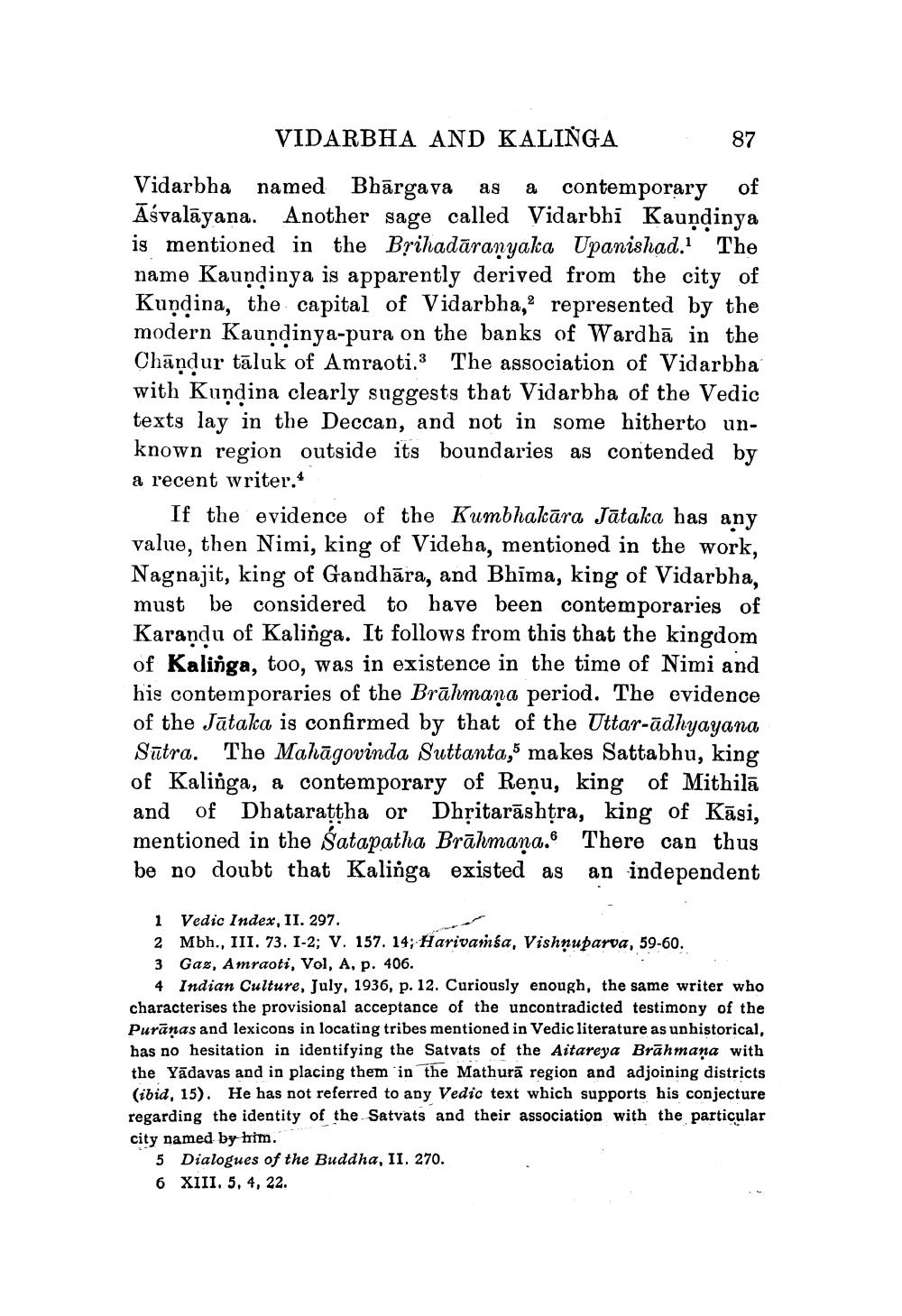________________
VIDARBHA AND KALINGA
87
Vidarbha named Bhārgava as a contemporary of Āśvalāyana. Another sage called Vidarbhi Kauņdinya is mentioned in the Brihadāranyaka Upanishad. The name Kaundinya is apparently derived from the city of Kundina, the capital of Vidarbha, represented by the modern Kauņdinya-pura on the banks of Wardhā in the Chāņdur tāluk of Amraoti.3 The association of Vidarbha with Kuņdina clearly suggests that Vidarbha of the Vedic texts lay in the Deccan, and not in some hitherto unknown region outside its boundaries as contended by a recent writer. 4
If the evidence of the Kumbhakāra Jataka has any value, then Nimi, king of Videba, mentioned in the work, Nagnajit, king of Gandhāra, and Bhima, king of Vidarbha, must be considered to have been contemporaries of Karandu of Kalinga. It follows from this that the kingdom of Kalinga, too, was in existence in the time of Nimi and his contemporaries of the Brāhmana period. The evidence of the Jataka is confirmed by that of the Uttar-ādhyayana Sutra. The Mahāgovinda Suttanta,5 makes Sattabhu, king of Kalinga, a contemporary of Reņu, king of Mithila and of Dhatarattha or Dhritarāshtra, king of Kāsi, mentioned in the Satapatha Brāhmaṇa. There can thus be no doubt that Kalinga existed as an independent
1 Vedic Index, II. 297. 2 Mbh., III. 73. 1-2; V. 157. 14; Harivamsa, Vishnuparva, 59-60. 3 Gaz, Amraoti, Vol, A, p. 406.
4 Indian Culture, July, 1936, p. 12. Curiously enough, the same writer who characterises the provisional acceptance of the uncontradicted testimony of the Purānas and lexicons in locating tribes mentioned in Vedic literature as unhistorical, has no hesitation in identifying the Satvats of the Aitareya Brāhmana with the Yādavas and in placing them in the Mathurā region and adjoining districts (ibid, 15). He has not referred to any Vedic text which supports his conjecture regarding the identity of the Satvats and their association with the particular city named by him.
5 Dialogues of the Buddha, II. 270. 6 XIII. 5, 4, 22.




